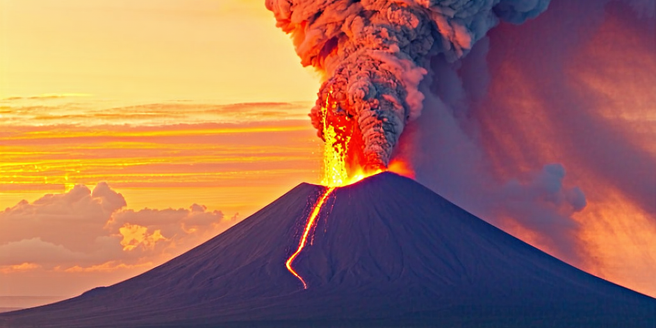
Understanding Stratospheric Aerosols
Stratospheric aerosols are tiny particles suspended in the stratosphere, primarily composed of sulfuric acid and water. These particles originate from volcanic eruptions, anthropogenic activities, and chemical reactions in the atmosphere. The concentration and distribution of these aerosols significantly influence the Earth’s radiation budget by scattering and absorbing solar radiation. This scattering can cause a cooling effect on the surface temperature. The lifecycle of stratospheric aerosols includes processes like nucleation, condensation, and coagulation, which determine their size and optical properties. Understanding the nature and behavior of these aerosols is crucial for climate science, as they play a pivotal role in both short-term weather events and long-term climatic patterns. Researchers continuously study these aerosols to improve climate models and better predict their impact on global weather systems.
Impact on Global Climate Systems
Stratospheric aerosols have a profound effect on the global climate systems through their interaction with solar radiation. By reflecting sunlight away from Earth, they can lower surface temperatures, leading to cooling periods known as volcanic winters following major eruptions. This cooling effect can alter atmospheric circulation patterns, influencing monsoon activity and shifting precipitation belts. The aerosols also impact the ozone layer, with some chemical reactions leading to ozone depletion, which has implications for ultraviolet radiation reaching the surface. Over time, the presence of these aerosols can contribute to changes in climate oscillations such as the El Niño-Southern Oscillation. As such, understanding stratospheric aerosols is essential for climate prediction and developing strategies to mitigate potential adverse effects on food security and water resources across different regions.
Role in Weather Modification
Stratospheric aerosols can play a significant role in weather modification by affecting cloud formation and precipitation patterns. The particles serve as nuclei for cloud droplets, influencing the microphysical properties of clouds. This can lead to changes in cloud reflectivity and longevity, ultimately altering weather patterns. Geoengineering initiatives have explored the deliberate injection of aerosols into the stratosphere to reflect sunlight and counteract global warming. However, these interventions carry uncertainties and risks, such as potential disruptions to regional climates and precipitation, which could impact agriculture and water supplies. Ethical and governance issues also arise from manipulating the climate system. As research progresses, it remains critical to weigh the potential benefits against the unintended consequences of using stratospheric aerosols for weather modification.
Sources and Composition of Aerosols
Stratospheric aerosols come from both natural and anthropogenic sources. Volcanic eruptions are one of the primary natural sources, injecting large quantities of sulfur dioxide into the stratosphere, which converts into sulfuric acid droplets. Other natural processes include wildfires and oceanic emissions. Human activities, such as fossil fuel combustion and industrial processes, also contribute to aerosol concentrations. The composition of stratospheric aerosols predominantly includes sulfuric acid, water, and sometimes volcanic ash and other trace substances. The size, distribution, and chemical makeup of these aerosols determine their optical properties and their impact on the Earth’s radiation balance. Understanding the origin and composition of stratospheric aerosols is vital for assessing their role in climate dynamics and developing strategies for emission reductions.
Research and Technological Advancements
Research into stratospheric aerosols has advanced significantly, driven by a need to understand their impact on climate and weather patterns. Technological advancements, such as satellite remote sensing and high-altitude balloon observations, allow for precise measurement of aerosol concentrations and distributions. These tools help scientists track changes over time and improve atmospheric models. Laboratory studies and climate simulations also provide insights into the chemical processes affecting aerosol properties. Efforts to refine geoengineering techniques, like solar radiation management, rely on this research. Despite progress, challenges remain in predicting the long-term effects of aerosols on the climate system. Continued research is essential for developing informed policies and strategies to mitigate adverse impacts while exploring potential climate intervention solutions.
Future Implications for Climate Policy
The study of stratospheric aerosols has critical implications for future climate policy. As understanding of these particles improves, it may guide the development of geoengineering strategies to mitigate global warming. However, the complexity and potential risks of such interventions necessitate careful consideration and international cooperation. Policymakers must address the ethical concerns and the governance frameworks required to regulate the deployment of aerosols in climate engineering. Additionally, reducing emissions of aerosol precursors from industrial sources can mitigate their climatic impacts. Future research will play a pivotal role in informing decisions on balancing the benefits and risks of aerosol-related technologies to enhance climate resilience and adaptation strategies. Collaborative efforts at global and national levels are essential to integrate scientific insights into effective climate policies.
